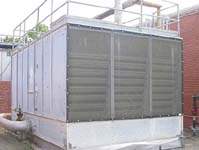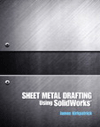With continuing escalation in fuel and energy costs, school systems recognize the importance of optimizing the insulation of school buildings and sealing the building to prevent loss of heating and cooling. When buildings have been effectively sealed, the heating and ventilation system is a key element in regulating a safe internal environment.
According to the American Lung Association, poor indoor air quality can trigger asthma episodes and a myriad of other health-related problems. Poor air quality is becoming increasingly costly for schools due to expensive mechanical and environmental consulting fees, rising energy cost, building and mechanical equipment failure and repair, and increased liability cost. For these reasons, proper maintenance of HVAC equipment that supports a high-quality indoor air environment is more than just a budget issue; it's a health and safety issue.
With schools faced with increasingly tight budgets and the need to optimize returns on facility and IAQ improvements, use of technologies that help to optimize HVAC efficiencies while reducing maintenance cost is a "common sense" approach that can help everyone breathe a little easier.

AIR INTAKE FILTRATION TECHNOLOGY
When air-handling units draw fresh air into buildings, the air typically travels through banks of internal pleated filters which capture small airborne particulates before they get inside the building. However, when large debris such as cottonwood seed, dandelion seed, leaves, insects, paper, construction debris, and other matter get into the fresh air openings, the internal filters can become prematurely fouled by the "blanketing effect" of large debris, rendering the internal filters significantly less effective at capturing the small particulate they were designed to stop. To solve this problem, the use of air intake filtration is an effective way to isolate large debris on the outside of the equipment where it can be easily removed. By stopping larger debris on the outside of the air-handling unit, it can increase the life of internal filters by up to 60 percent and that means a savings in filter cost and an improvement in indoor air quality.
Schools using cooling towers for environmental cooling must recognize that keeping debris out of the cooling tower is critical to safety and system efficiency. When you think of cooling towers, it is important to realize that they are very large and efficient "air scrubbers" - all airborne matter that happens to float past the draft of the tower gets drawn into the cooling water and can compromise the entire system by plugging strainers and heat exchangers, reducing water flow, and thwarting the heat exchange process. Furthermore, when debris gets into the fill material, it can reduce the cooling tower's ability to cool the water to the designed temperature point before being recirculated through the cooling loop. When cooling water exceeds the designed temperature point when introduced into the chiller unit, it increases the load on the chiller, reduces the heat exchange capacity, and can lead to chiller failure.

By using air intake filters, with a well-managed water treatment regimen, a cooling tower will stay clean and operate efficiently.
Air Intake Filtration Features:
Benefits of Air Intake Filtration on:
Air-Handling Units
Air-Cooled Chillers and Condenser Coils
Cooling Towers
School facility managers and maintenance engineers seeking ways to improve indoor air quality would be well served by integrating air intake filtration technology into their preventative maintenance program.
Randy Simmons is vice president of Air Solution Co., a manufacturer of air intake filtration systems for chiller and condensing coils, cooling towers, rooftop units, and other high-volume/high-velocity air intake systems. For more information, call 513-860-9784 or 248-676-9418, e-mail airsolutioncompany@hotmail.com, or visit www.airsolutioncompany.com.
Publication date: 07/10/2006






